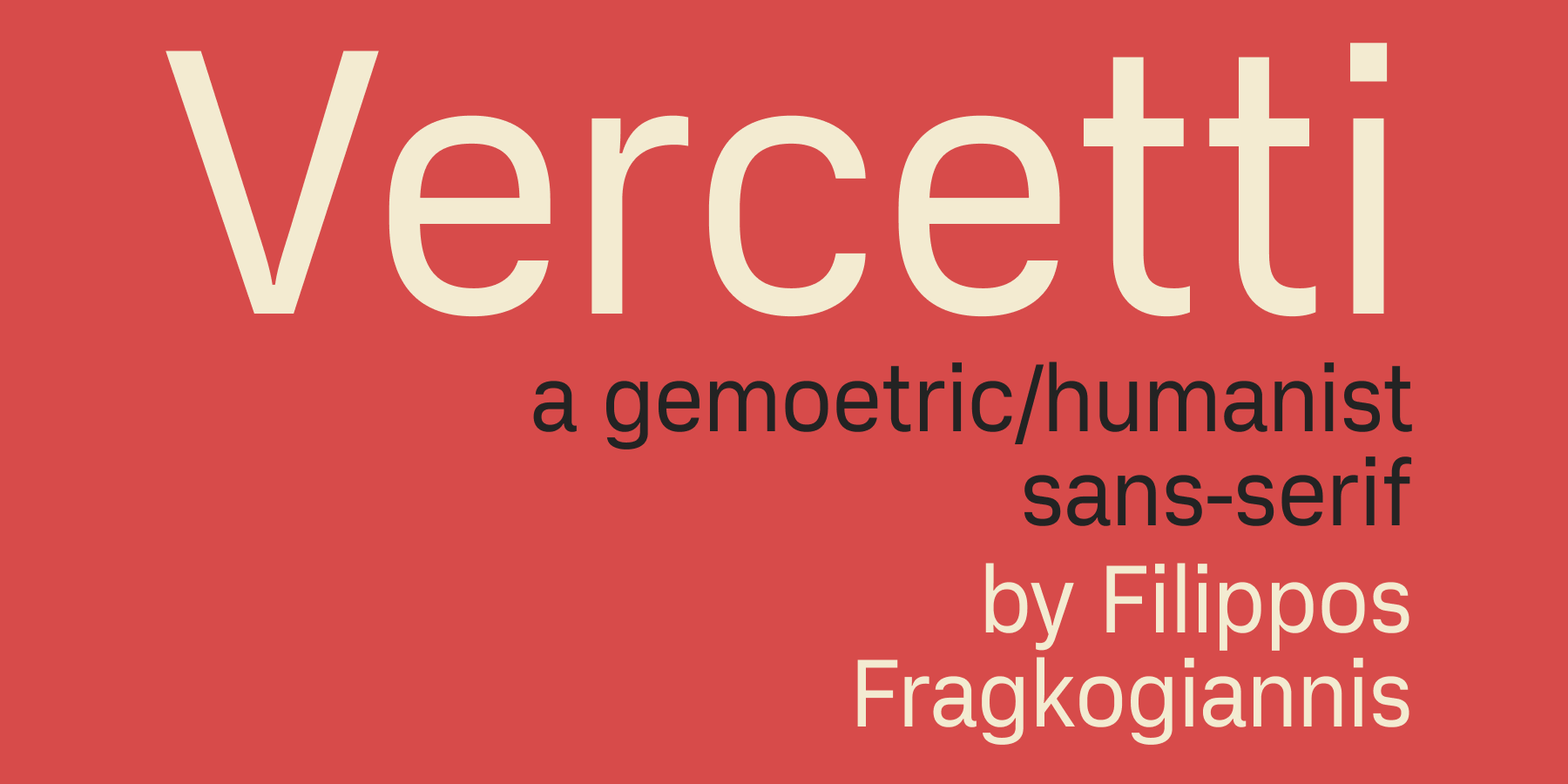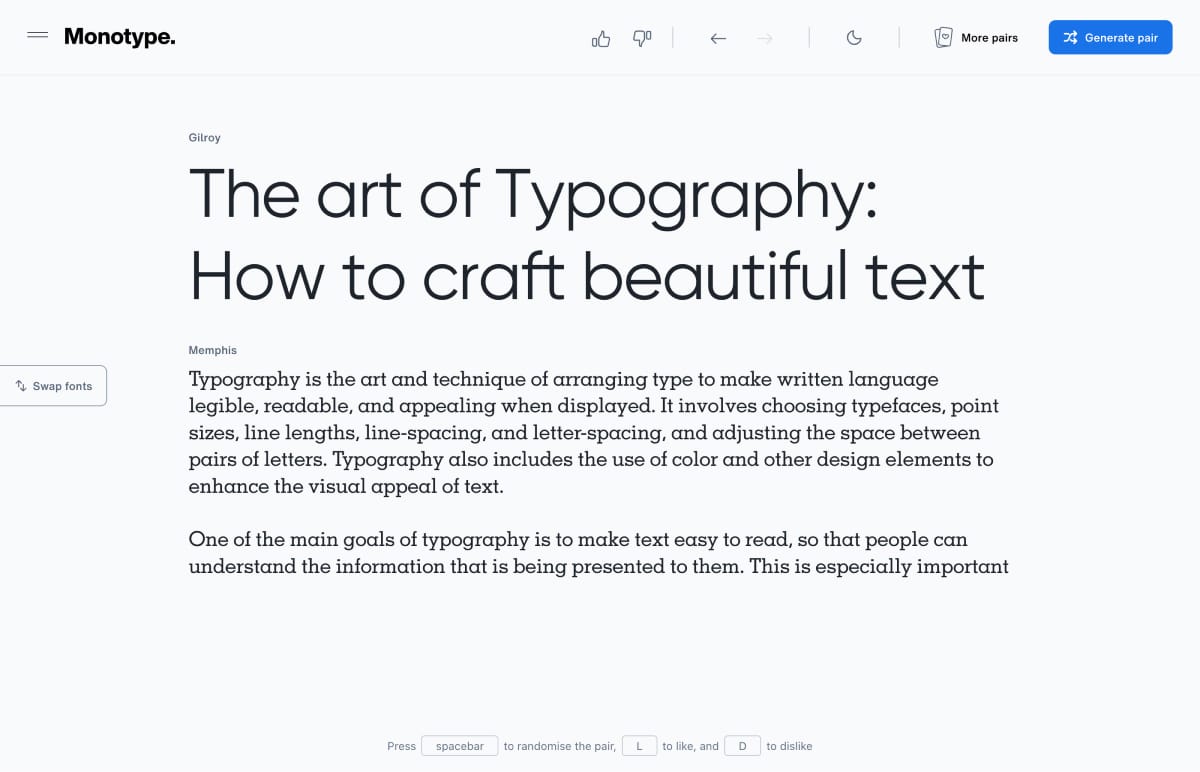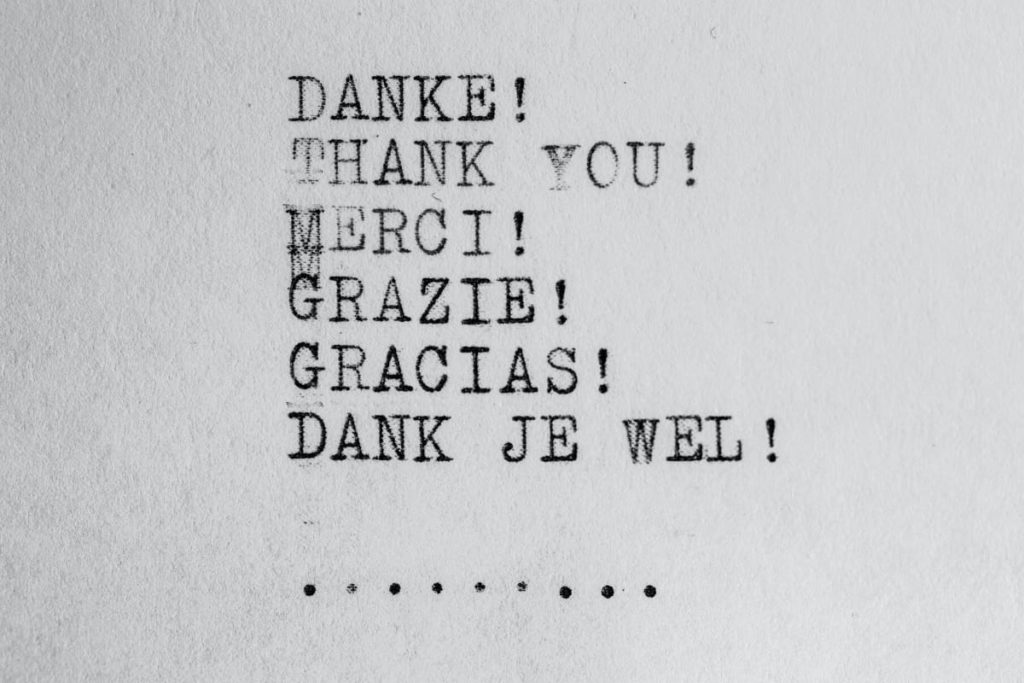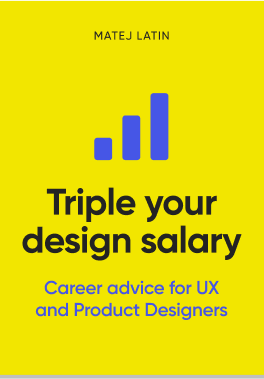Welcome to the 18th edition of Designer’s Digest. Today I take a look at AI’s capability to pair fonts and question whether it’s really AI or do they claim it’s AI because of the AI hype?
Do you enjoy this newsletter? Share it on Twitter, post it on LinkedIn, or tell your friends to subscribe here. I’ll be forever grateful! 🙏
In this edition:
- Vercetti (a humanist/geometric sans-serif font)
- Monotype’s AI-powered font pairing tool
- UX Design: A thankless profession? (10 min read)
How are you? I usually write this personal note first and then proceed to the rest of the content of the newsletter. Today I found it particularly hard to get this edition together. I have a massive headache, I feel a bit burned out, and I didn’t sleep well (our newborn twins were fussy during the night). I feel uninspired today so I’m writing this note at the end, for a change.
It’s ok. Days like these come and go. What gets you through them is a solid process and a purpose. My purpose is clear — to support my family financially in a way that I can also spend time with them, and help designers become better designers. The process is my routine. I stick to it religiously.
I’m committed to my purpose which means I’m also committed to this newsletter. It takes a significant amount of time and energy to put together each edition. I re-released the printed version of my book this week which hasn’t been available for years. If you like this newsletter please consider getting one and help support my work. I offer it with a $10 discount for a limited time so get your copy before it runs out.
Vercetti
is a sans serif font inspired by a humanistic design with a geometric touch. I enjoyed using it to create this week’s imagery for the newsletter. A caveat though, it only comes in one style and one weight. I think it’s still great to use for titles. I’d use it set in a large type size so that it dominates the page.

Putting AI to work: The magic of typeface pairing.
Can AI really pick good font pairings? I finally decided to look into AI’s capabilities when it comes to typography. One of the first things I found is Monotype’s AI-powered font pair generator. So I decided to give it a try and found it quite interesting. But is it really AI? And does it come up with good font pairings?

It’s very simple to use: you pick one font, either the title or body text and the generator will come up with pairings based on that font. I picked Gilroy for the title font as it’s the font I use on my website. The tool came up with around 4 font pairings. Only two of them looked ok, they were both combined with slab serif fonts. Others were combinations with classical style fonts which didn’t work for body text at all.
The Monotype’s article explaining the tool says it looks for harmonious combinations of x-height, apertures, terminals, and overall width. But to really make this useful, I’d like to be able to specify the classifications of fonts I want to combine. For example, I don’t want a slab serif or a classical style at all. What I’d expect from AI is to be able to give it a prompt like: come up with a pairing of two fonts for a website of a female author writing about motherhood. It needs to feel modern and candid, and it would come up with a few suggestions.
Until a tool can do that, can we really call it AI? 🤔
UX Design: A thankless profession?
You probably noticed that there’s a lot of negativity surrounding the UX industry lately. I’ve also been featuring articles about the death of UX and similar. So this week I wanted to feature this article because it acknowledges a part of that negativity and puts a different, more positive perspective on it.

Let me ask you something: when was the last time you noticed a bus driver doing his job well? Never is probably the answer. Here’s why — we all notice when they don’t do it well, when they’re late, for example. If they’re on time we just hop on the bus, take the ride and get off.
It’s the same with the design profession. People we work with don’t notice us until we screw something up. Or maybe those one-in-a-million moments when we do something brilliantly. I think Chris Kiess has a point in his article when he questions whether that truly matters. If you know you did a good job designing something, do you really need acknowledgement? Do you need a tap on your shoulder?
We live in a designed world with unseen faces and lives working to keep it all together. And yet it is rare that most of us stop to appreciate, recognize or even think much about it.
Chris Kiess
It’s the curse of being a designer. We’re middlemen. We don‘t really build things, developers do. So when it comes to recognition, they’ll be on the receiving end more often. It‘s part of the job. And believe me, I’ve been there. I had come up with great ideas that turned into statistically significant improvements in key business metrics and I wasn’t recognised for it. It got to me, I admit. But the real reward is learning and improving constantly, and the fact that I love my job. That’s it!
When was the last time you were recognised for a design well done my friend?
That’s it for this Monday, did you like this edition? Please reply to this email and let me know! 👋
Cheers,
Matej
